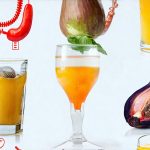Many individuals experience overactive bladder (OAB) symptoms or general bladder sensitivity, leading to frequent urges to urinate, nighttime trips to the bathroom, and sometimes, accidental leakage. While staying adequately hydrated is crucial for overall health, certain beverages – particularly those containing caffeine, alcohol, or acidic compounds – can exacerbate these issues. Tea, despite its perceived health benefits, often falls into this category due to its caffeine content and potential diuretic effects. This creates a challenge: how do you stay properly hydrated without irritating your bladder? Fortunately, there’s a wide range of delicious and refreshing alternatives that can provide the hydration you need without triggering uncomfortable symptoms. Understanding why certain beverages bother sensitive bladders is the first step towards finding suitable replacements, paving the way for increased comfort and improved quality of life.
This article will explore various tea-free hydration options designed specifically for those with bladder sensitivity. We’ll delve into the science behind why some drinks are more problematic than others, then offer practical alternatives categorized by their properties and benefits. The goal isn’t to eliminate all fluids—that would be detrimental!—but rather to make informed choices that support both your health and your bladder comfort. Ultimately, finding the right hydration strategy is a personal journey, and we’ll equip you with the knowledge to navigate it effectively.
Water: The Gold Standard & Beyond
Water remains the absolute best choice for overall hydration, and often, the most tolerated by sensitive bladders. It’s naturally pH-balanced, free of additives, caffeine, and other potential irritants. However, simply drinking plain water can sometimes feel monotonous, leading to insufficient intake. Luckily, there are ways to enhance water’s appeal without compromising its bladder-friendly nature. Infusing water with fruits or herbs is an excellent option. Consider adding slices of cucumber, berries, or even a sprig of mint for a subtle flavor boost. These additions not only make the water more palatable but can also provide extra vitamins and antioxidants.
Beyond plain infused water, exploring different types of still mineral water can add variety. Some mineral waters contain naturally occurring electrolytes which can be beneficial, particularly after physical activity. However, it’s important to check the label and choose options low in sodium if you are monitoring your salt intake. Remember that sparkling water, while seemingly harmless, can sometimes irritate sensitive bladders due to its carbonation – so start with small amounts and monitor your reaction. Staying consistently hydrated is key, even if it means sipping small amounts of water throughout the day rather than drinking large volumes at once. To further refine your hydration habits, consider exploring smart hydration cycles tailored for sensitive urinary systems.
Finally, temperature matters. Some individuals find that very cold drinks trigger bladder symptoms, while others prefer them. Experiment to determine what works best for you. Room-temperature or slightly chilled water is generally well-tolerated.
Alternatives That Quench & Comfort
Moving beyond water, several other beverages can provide excellent hydration without the drawbacks of tea and other common irritants. Coconut water, naturally electrolyte-rich and lower in acidity than many fruit juices, is a popular choice for rehydration after exercise or during hot weather. However, be mindful of added sugars in some commercially available coconut waters – opt for unsweetened varieties whenever possible. Similarly, diluted fruit juices (primarily apple or pear) can offer a touch of sweetness without overwhelming your bladder. Diluting juice with water significantly reduces its acidity and sugar concentration.
Another excellent alternative is herbal infusions specifically designed to be bladder-friendly. While traditional teas often contain caffeine, certain herbal blends—such as chamomile, dandelion root, or fennel seed—are naturally caffeine-free and may even possess soothing properties for the urinary tract. It’s crucial to carefully check the ingredients list of any herbal infusion to ensure it doesn’t contain bladder irritants like citrus peels or hibiscus. To learn more about finding gentle alternatives, explore tea-free hydration options that won’t disrupt your comfort.
Identifying Your Personal Triggers
Understanding what specifically triggers your bladder sensitivity is paramount. Keeping a detailed fluid diary can be incredibly helpful. For at least three days, meticulously record everything you drink, the amount consumed, and any associated bladder symptoms (urgency, frequency, discomfort). This log will help identify patterns and pinpoint potential irritants. – Note the time of day you experience symptoms – Track how long after consuming a beverage symptoms arise – Record even small amounts of problematic drinks
Don’t overlook seemingly innocuous beverages like flavored waters or sports drinks. These often contain hidden ingredients that can irritate sensitive bladders, such as artificial sweeteners or high levels of electrolytes. Read labels carefully and prioritize natural alternatives whenever possible. Self-awareness is your most powerful tool in managing bladder sensitivity. If you’re seeking a more structured approach to understanding your triggers, consider mindful hydration journaling for deeper urological insight.
Gradual Introduction & Monitoring
When introducing new beverages into your hydration routine, do so gradually. Start with small amounts and closely monitor your body’s response. Avoid making drastic changes all at once, as this can overwhelm your system and make it difficult to identify the source of any discomfort. – Begin with a few sips or ounces of the new beverage – Observe for at least 24 hours before increasing intake – Pay attention to any changes in urgency, frequency, or leakage
If you experience any adverse symptoms, immediately discontinue consumption and revert to your baseline hydration strategy. Remember that everyone’s tolerance levels differ; what works well for one person may not work for another. Patience and careful observation are key to finding the right balance.
Lifestyle Considerations & Supportive Habits
Hydration isn’t just about what you drink, but also how you drink and your overall lifestyle habits. Avoid consuming large amounts of fluids close to bedtime to minimize nighttime trips to the bathroom. Instead, spread your fluid intake evenly throughout the day. Regular pelvic floor exercises (Kegels) can strengthen the muscles that support your bladder, helping to improve control and reduce leakage. Maintaining a healthy weight is also important, as excess weight can put additional pressure on your bladder. Finally, manage stress levels, as stress can often exacerbate OAB symptoms. Incorporating relaxation techniques like deep breathing or yoga into your routine can be highly beneficial. To further support overall wellness, consider hydration strategies specifically designed for bladder support.
Remember that a holistic approach to health includes not only hydration but also dietary considerations; explore everyday foods that soothe sensitive bladders for added benefit.
For those seeking a comprehensive understanding of bladder health, exploring hydration mindset tips for long-term flow stability can prove invaluable, and don’t hesitate to consult with a healthcare professional for personalized guidance.





















